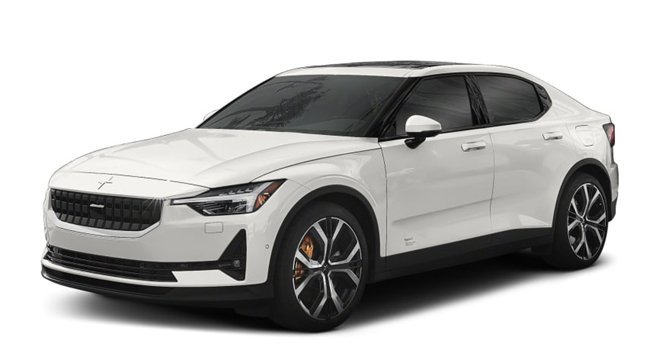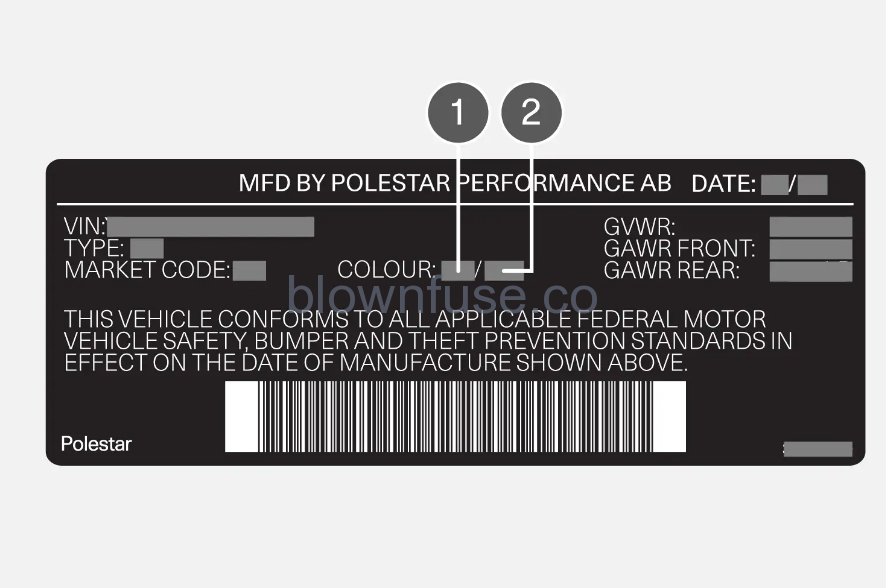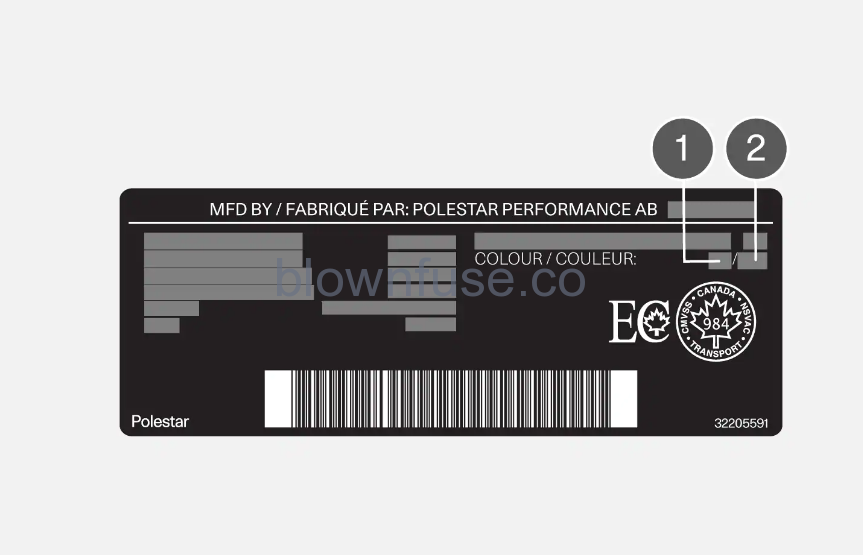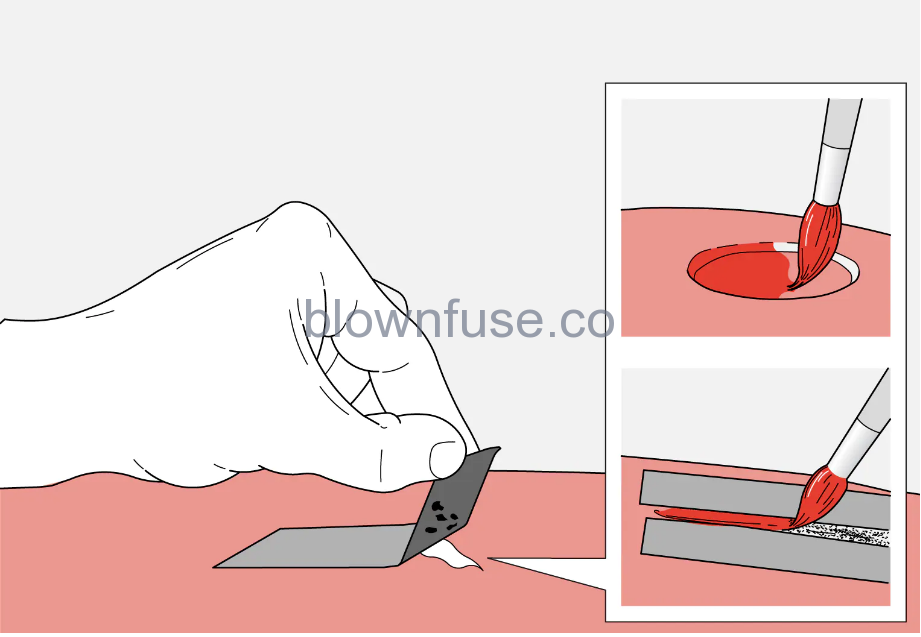2022 Polestar 2 Exterior cleaning

Automatic car washes
Polestar has recommendations on suitable cleaning agents and car care products for the different parts of the vehicle. Contact Polestar Customer Support for more information on which products are suitable to use.
Washing your vehicle in an automatic car wash is a fast and easy way to keep your vehicle clean but it does not reach all areas of the vehicle. Polestar recommends washing your vehicle by hand or supplementing automatic car washes with a hand wash.
Polestar recommends not washing the vehicle in an automatic car wash during the first few months; the paintwork on new vehicles takes some time to fully harden.
Note that the keyless locking and unlocking function could cause the vehicle to lock/unlock when it is being washed if the key is within range.
For automatic car washes in which the vehicle is pulled forward on rolling wheels:
- Before washing the vehicle, make sure that the automatic rain sensor is deactivated. If it is not deactivated and inadvertently starts, the wiper arms could be damaged.
- Make sure that any auxiliary lights are secured to help prevent them from being damaged by the automatic car wash.
- Deactivate warning and auto-braking when backing up.
- Keep your seat belt buckled for the entire car wash.
- Drive into the automatic car wash.
- Put the gear selector in N.
The vehicle is ready for the automatic car wash.
The system will automatically activate the parking brake if the above steps are not followed. Do not activate the parking brake when washing the vehicle in an automatic car wash.
Do not use the center display to switch off the vehicle. If the vehicle is switched off, the parking brake will be activated.
Do not use tow mode while in an automatic car wash.
Always test the brakes, including the parking brake, after washing the vehicle to ensure that moisture and corrosion do not attach to the brake pads and impair brake functionality.
Lightly depress the brake pedal from time to time when driving long distances in rain or slush. The heat from the friction will help warm up and dry the brake pads. Do the same after starting the vehicle in very damp or cold weather.
Cleaning exterior plastic, rubber, and trim components
A special cleaning agent is recommended for the cleaning and care of colored plastic parts, rubber, and trim components, e.g. glossy trim. Follow the usage instructions for the cleaning agent carefully.
Polestar has recommendations on suitable cleaning agents and car care products for the different parts of the vehicle. Contact Polestar Customer Support for more information on which products are suitable to use.
Avoid waxing and polishing plastic and rubber.
If using degreaser on plastic and rubber, only rub (if necessary) with slight pressure. Use a soft sponge.
Polishing glossy trim moldings can wear away or damage the glossy surface layer.
Polish containing abrasives must not be used.
For advice on how to maintain the emblem’s matte finish, see the separate section.
Cleaning matte emblems
Polestar has recommendations on suitable cleaning agents and car care products for the different parts of the vehicle. Contact Polestar Customer Support for more information on which products are suitable to use.
- Hose down the entire emblem and remove any loose dirt, droppings, etc. to reduce the risk of scratches from washing. Be particularly careful when using a high-pressure wash.
- Wash the emblem using a microfiber cloth, car washing detergent for matte paint, and plenty of lukewarm water.
- Dry with a clean and soft microfiber cloth.
Ensure that doors, windows and hatches are closed during high-pressure washing.
Never polish an emblem with a matte finish. Polishing could cause the emblem to become shiny.
Do not use paint cleaners, abrasives, polishing products, or gloss protection, e.g. wax for high-gloss paint. These products are only designed for high-gloss surfaces. Using these products on matte paint will lead to shiny spots on the paintwork.
IMPORTANT
Insects, sap, grease spots, oil, and fingerprints are most effectively removed using a detergent specially designed for matte paint. Apply the detergent using a microfiber cloth and gentle pressure.
Asphalt stains can be removed with a vegetable-based asphalt remover. Wipe carefully and do not press too hard on the emblem. Contact Polestar Customer Support for product recommendations.
Do not rub the emblem when washing and drying the vehicle. This could destroy the matte effect and make the emblem permanently glossy.
Cleaning rims
Polestar has recommendations on suitable cleaning agents and car care products for the different parts of the vehicle. Contact Polestar Customer Support for more information on which products are suitable to use.
Only use rim cleaning products recommended by Polestar.
Strong rim cleaning agents could damage the surface and stain the chromed aluminum rims.
Cleaning the exterior
Polestar has recommendations on suitable cleaning agents and car care products for the different parts of the vehicle. Contact Polestar Customer Support for more information on which products are suitable to use.
Cleaning wiper blades
Asphalt, dust, and salt residue on wiper blades, as well as insects, ice, etc. on the windshield, shorten the service life of wiper blades.
When cleaning, put the wiper blades in the service position.
Polestar has recommendations on suitable cleaning agents and car care products for the different parts of the vehicle. Contact Polestar Customer Support for more information on which products are suitable to use.
Wash the wiper blades and windshield regularly with a lukewarm soap solution or vehicle shampoo. Do not use strong solvents.
Color codes
 Sample color code: US models.
Sample color code: US models.
- Exterior color code
- Secondary exterior color code (if applicable)
 Sample color code: Canadian models.
Sample color code: Canadian models.
- Exterior color code
- Secondary exterior color code (if applicable)
It is important to use the right color.
Corrosion protection
Corrosion protection for the body consists of modern metallic protective coatings on the sheet metal, a high-quality painting process, corrosion-protected and minimized metal overlap, and shielding plastic components, abrasion protection, and supplemental rust inhibitor in exposed areas. In the chassis, exposed components of the wheel suspension are made of corrosion-resistant cast aluminum.
Polestar has recommendations on suitable cleaning agents and car care products for the different parts of the vehicle. Contact Polestar Customer Support for more information on which products are suitable to use.
Hand washing
Polestar has recommendations on suitable cleaning agents and car care products for the different parts of the vehicle. Contact Polestar Customer Support for more information on which products are suitable to use.
For advice on how to maintain the emblem’s matte finish, see the separate section.
- Avoid washing the vehicle in direct sunlight. This could cause the detergent or wax to dry out and become abrasive.
- Remove bird droppings from paintwork as soon as possible. It contains chemicals that affect and discolor paintwork very quickly. Use e.g. soft paper or a sponge soaked in lots of water. Contact Polestar Customer Support for information on removing discoloration.
- Hose down the underbody, including the wheel housings and bumper.
- Hose down the entire vehicle and remove any loose dirt, droppings, etc. to reduce the risk of scratches from washing. Do not spray directly onto locks.
- If necessary, use a cold degreaser on heavily soiled surfaces. Note that in such cases the surfaces must not be hot from the sun.
- Wash using a sponge, car washing detergent, and plenty of lukewarm water.
- Clean the wiper blades with lukewarm soap solution or car washing detergent.
- Dry the vehicle using a clean, soft chamois or a squeegee. Try not to let drops of water dry in strong sunlight. This could cause water-drying stains that may need to be polished out.
- In areas with heavy industrial emissions, more frequent washing of the vehicle’s exterior is recommended.
- Tar spots from asphalt may remain even after washing. Use a tar remover to remove these spots after washing the vehicle.
Dirty headlights do not work as well. Clean them regularly.
Do not use corrosive cleaners. Use water and a non-abrasive sponge.
Exterior lighting such as headlights and taillights may develop temporary condensation on the inside of the lens. This is normal. All exterior lighting is designed to resist this. Condensation is normally vented out of the lamp housing once the light has been lit for some period of time.
- Never use abrasive polishing agents on the panoramic roof*.
- Never use wax on the rubber seals around the panoramic roof*.
Remember to remove dirt from the drain holes in the doors and sills after washing the vehicle.
Note that the keyless locking and unlocking function could cause the vehicle to lock/unlock when it is being washed if the key is within range.
High-pressure washing
Polestar has recommendations on suitable cleaning agents and car care products for the different parts of the vehicle. Contact Polestar Customer Support for more information on which products are suitable to use.
For advice on how to maintain the emblem’s matte finish, see the separate section.
If washing the vehicle with a high-pressure wash, use sweeping movements and keep the nozzle at least 30 cm(13 in.) from the vehicle. Do not spray directly on the locks or on the inside of the charger door.
Paintwork
The most common types of paint damage are minor stone chips, scratches, and damage to e.g. the edges of fenders, doors, and bumpers. To help prevent further damage to the paintwork, damage should be rectified immediately.
Polishing and waxing
Never polish or wax the vehicle’s matte emblem. This could destroy the matte effect and make the surface permanently glossy.
- Wash and dry the vehicle very carefully before polishing or waxing. Remove asphalt and tar stains with asphalt remover or paint thinner. More stubborn stains can be removed with a grinding paste designed for vehicle paint.
- Use polish first and then liquid or paste wax. Follow the instructions on the package carefully. Many products contain both polish and wax.
- A wide range of polymer-based waxes can be purchased today. These waxes are easy to use and produce a long-lasting, high-gloss finish that protects the bodywork against oxidation, road dirt, and fading.
Avoid waxing and polishing plastic and rubber.
If using degreaser on plastic and rubber, only rub (if necessary) with slight pressure. Use a soft sponge.
Polishing glossy trim moldings can wear away or damage the glossy surface layer.
Polish containing abrasives must not be used.
Only use paintwork treatments recommended by Polestar. Contact Polestar Customer Support for information. Other treatments, such as preservation, sealing, protection, luster sealing, or similar, could damage the paintwork. Paintwork damage caused by such treatments is not covered by Polestar’s warranty.
Polestar has recommendations on suitable cleaning agents and car care products for the different parts of the vehicle. Contact Polestar Customer Support for more information on which products are suitable to use.
Touching up minor paint damage
To help prevent further damage to the paintwork, damage should be rectified immediately.
Make sure the surface is clean and dry before performing any touch-ups to the paint. The surface temperature should be at least 15 °C (59 °F).
- Primer ‒ special adhesive primer is available in a spray can for e.g. plastic-covered bumpers.
- Base coat and clear coat ‒ available in spray cans or as a touch-up pen/stick.
- Masking tape.
- Fine-grain sandpaper.
If the damage has not reached all the way down to the metal, then touch-up paint can be applied immediately after the surface has been cleaned.

- Place a strip of masking tape over the damaged surface. Pull the tape off so that any loose flakes of paint adhere to it.
If the damage goes down to the bare metal, you may need to use a primer first. If the paint damage is on a plastic surface, an adhesive primer should be used for better results. Spray the primer into the lid of the spray can and brush on thinly.
- Light sanding with very fine-grained sandpaper or similar may be required before painting (e.g. if there are uneven edges). Clean the area carefully and let it dry.
- Thoroughly mix the primer and apply it with a small brush, toothpick, or similar. When the primer is dry, apply one or more coats of paint and then a clear coat, letting the paint dry between each application.
If there is a longer scratch, follow the same procedure as above, but first, mask off the surrounding area to protect the undamaged paint.
Contact Polestar Customer Support for information about touch-up pens/sticks and spray paint for touching-up paint damage.
If the stone chip has not gone down to the bare metal and an undamaged coat of paint remains, apply the base coat and clear coat immediately after cleaning the surface.

